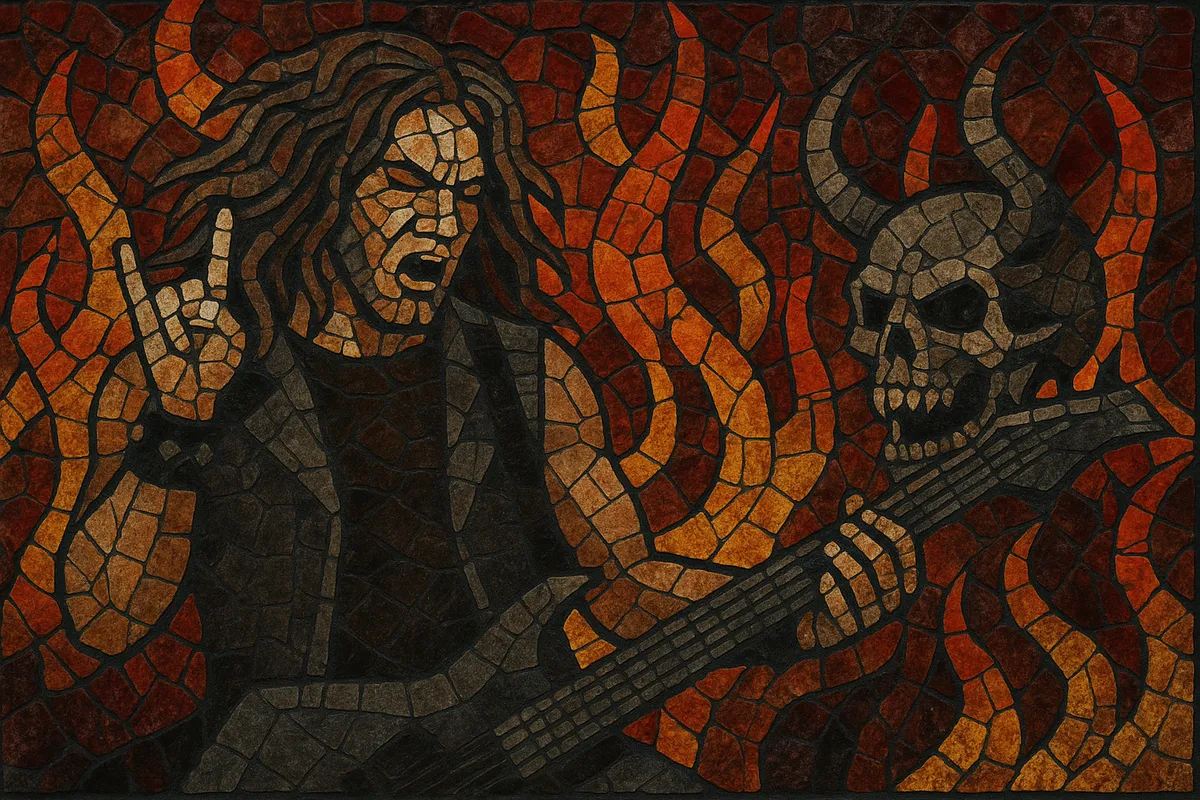
Heavy metal is a loud, guitar-driven style of rock defined by heavily distorted riffs, thunderous drums, and powerful vocals. Its musical language emphasizes minor modes, modal (Aeolian, Phrygian) riffing, and energy over groove, often featuring virtuosic guitar solos and dramatic dynamic contrasts.
Emerging from late-1960s blues rock and psychedelic experimentation, heavy metal codified a darker, heavier sound with bands like Black Sabbath, Deep Purple, and Led Zeppelin. The genre values weight, intensity, and grandeur—whether through plodding, doom-laden tempos or galloping, high-energy rhythms—paired with themes that range from personal struggle and social critique to fantasy, mythology, and the occult.
Heavy metal crystallized in the United Kingdom from the heaviest strains of blues rock and psychedelic rock. Bands like Black Sabbath introduced down-tuned guitars, ominous tritones, and doom-laden subject matter; Deep Purple brought classical-tinged virtuosity and organ-and-guitar power; Led Zeppelin fused hard blues with monumental riff craft. By the early 1970s, the term “heavy metal” became associated with a darker, louder, and more aggressive rock aesthetic.
Judas Priest streamlined the bluesy roots into a tighter, twin-guitar attack, codifying metal’s leather-and-studs image and high-register vocals. The New Wave of British Heavy Metal (NWOBHM) — with Iron Maiden, Saxon, and others — accelerated tempos, emphasized galloping rhythms, and sharpened melodic hooks, laying the groundwork for future extremities.
The 1980s saw metal explode worldwide. Traditional heavy metal coexisted with glam/hair metal’s commercial sheen and with faster, more aggressive offshoots. Speed and thrash metal (inspired by NWOBHM, punk energy, and intensified riffing) pushed velocity and precision, while power metal magnified heroic melodies and neoclassical technique.
Death and black metal took heaviness to new extremes in timbre, tempo, and atmosphere. Groove metal emphasized syncopated, down-tuned riffing. Alternative and nu metal brought hip hop, industrial, and alternative rock elements into the metal palette. Meanwhile, gothic, symphonic, progressive, stoner, sludge, and folk metal showcased metal’s adaptability to diverse aesthetics.
Heavy metal remains a global ecosystem: legacy acts headline arenas while new bands blend classic riff traditions with contemporary production and eclectic influences. Festivals, online communities, and archival reissues have cemented both the genre’s heritage and its ongoing innovation.

